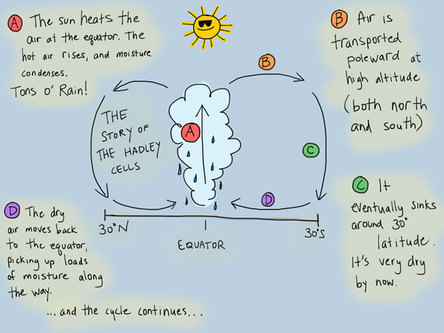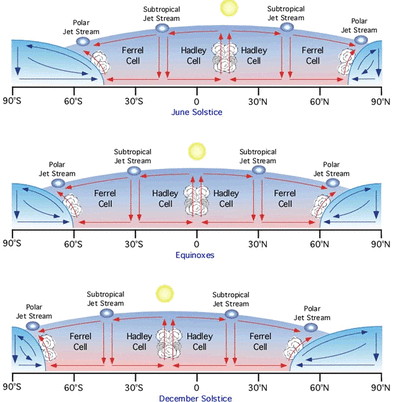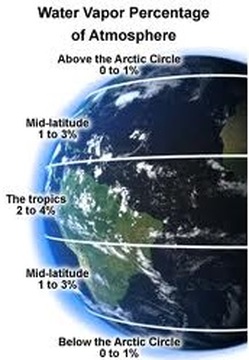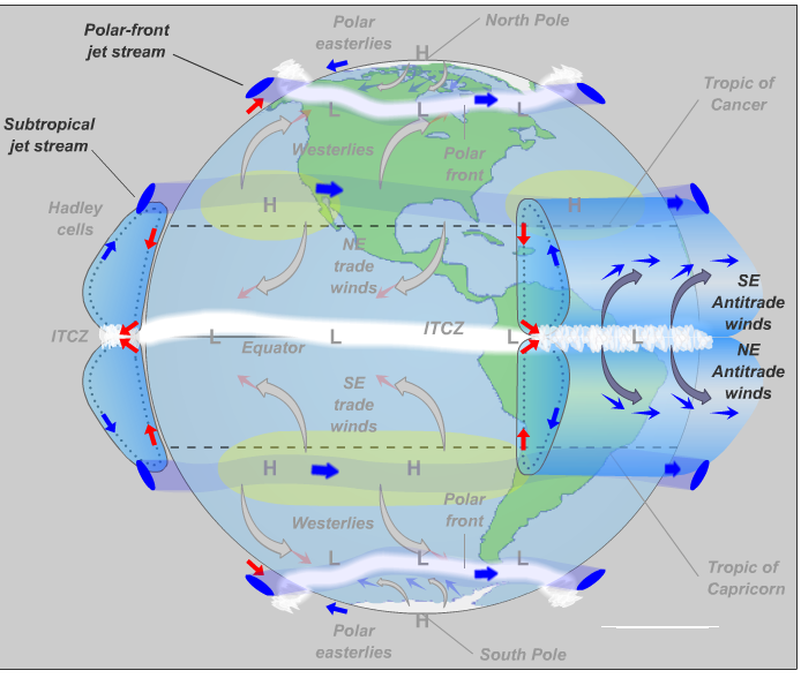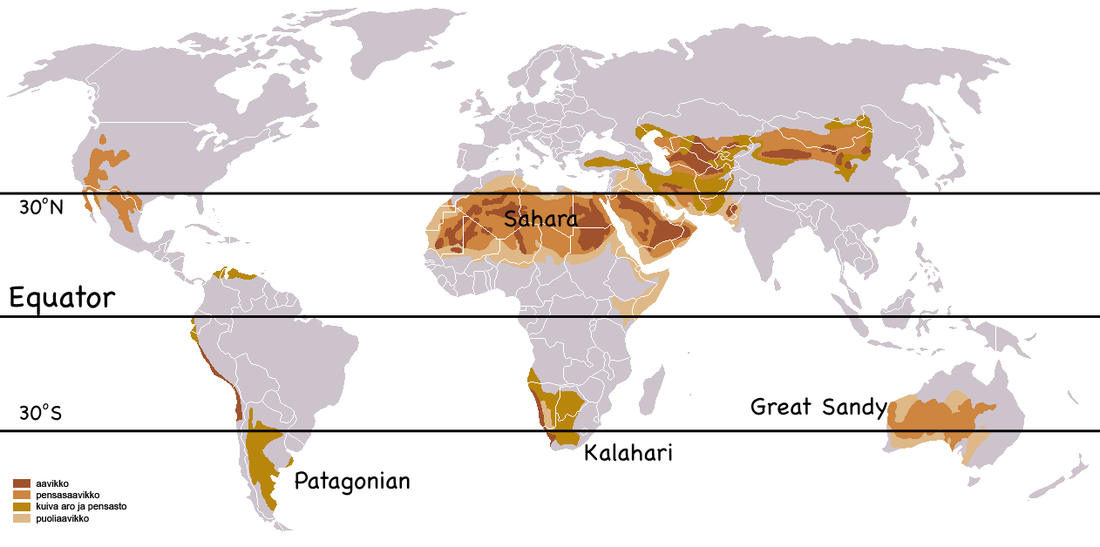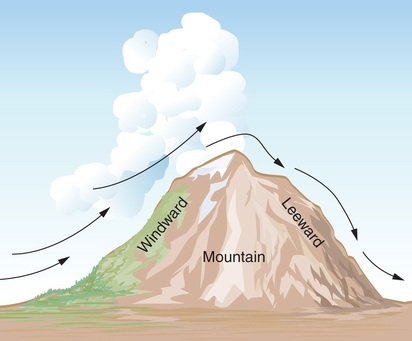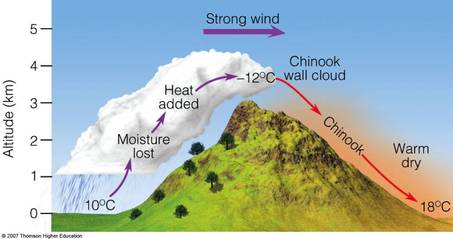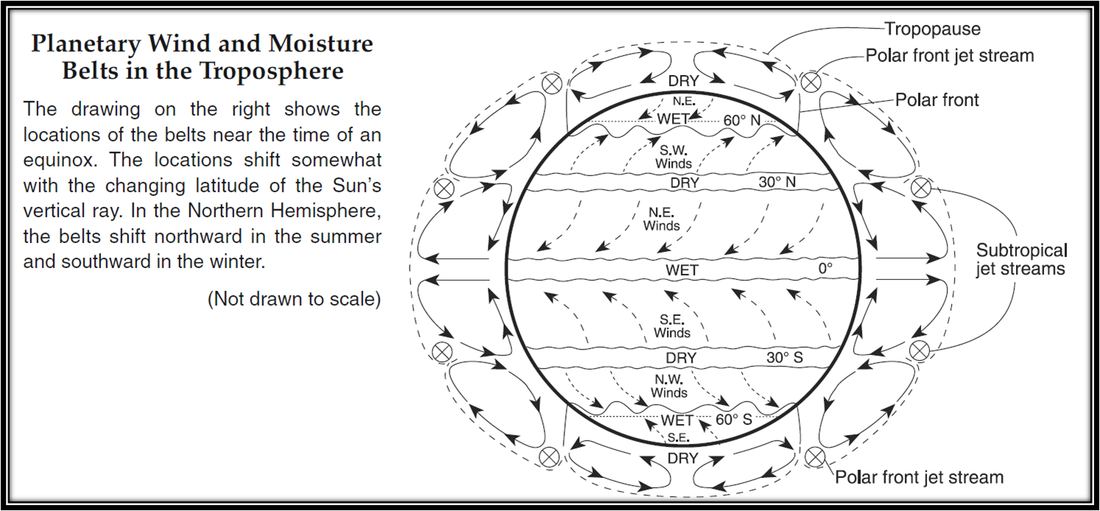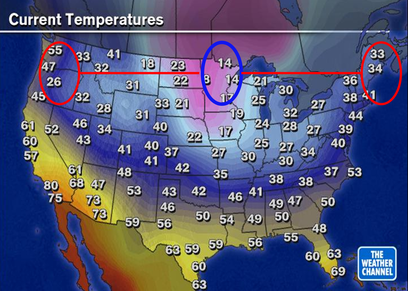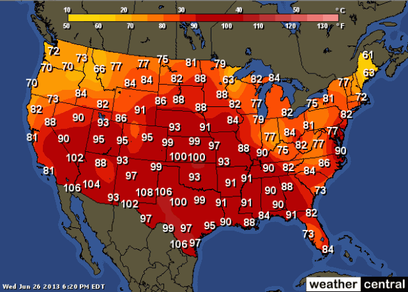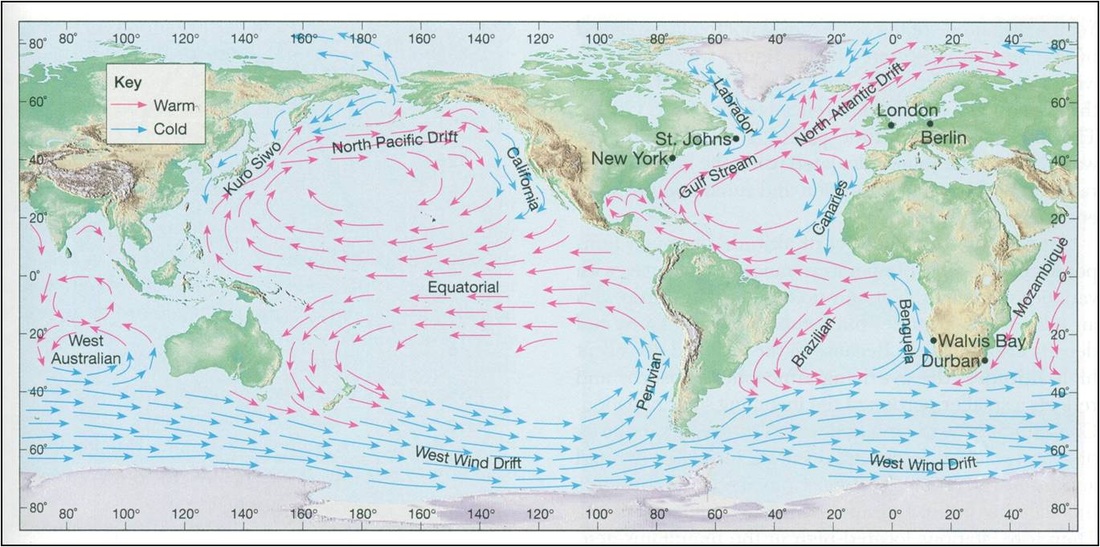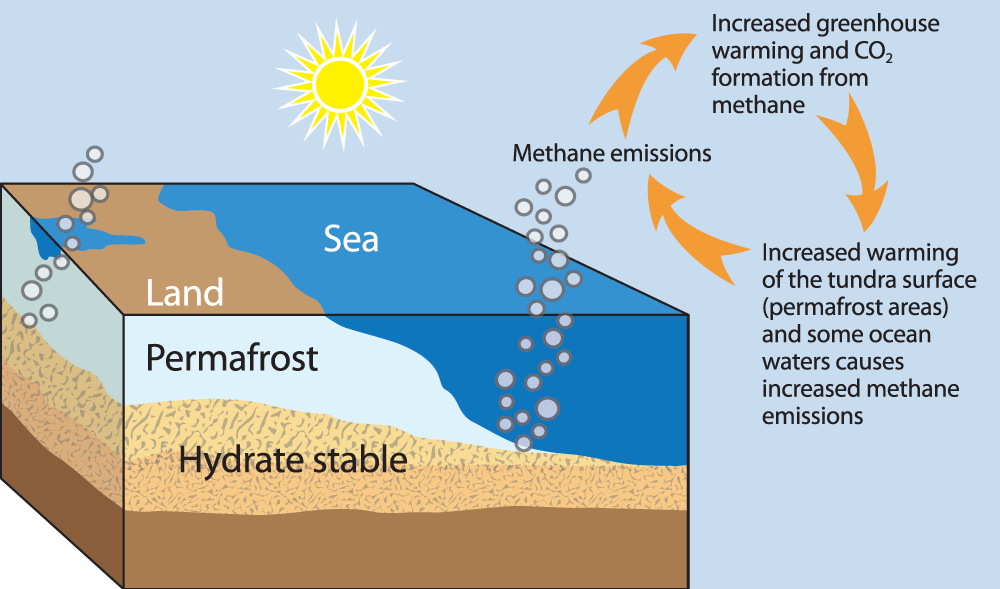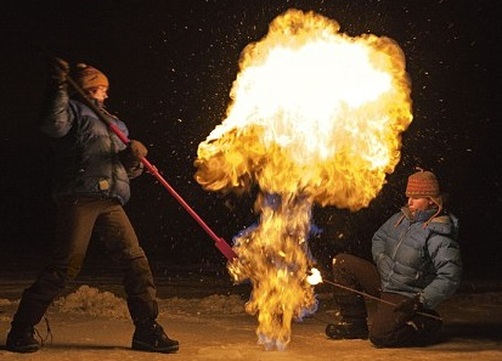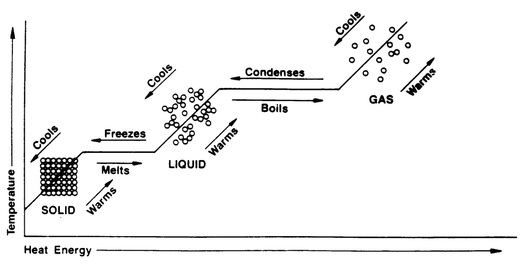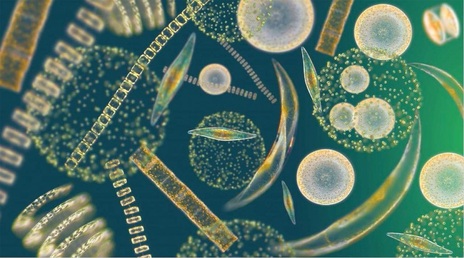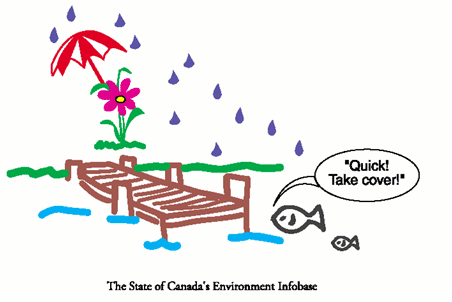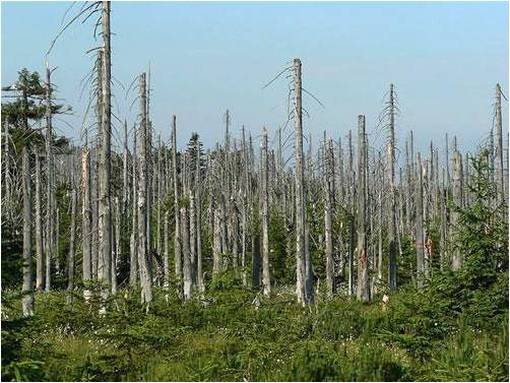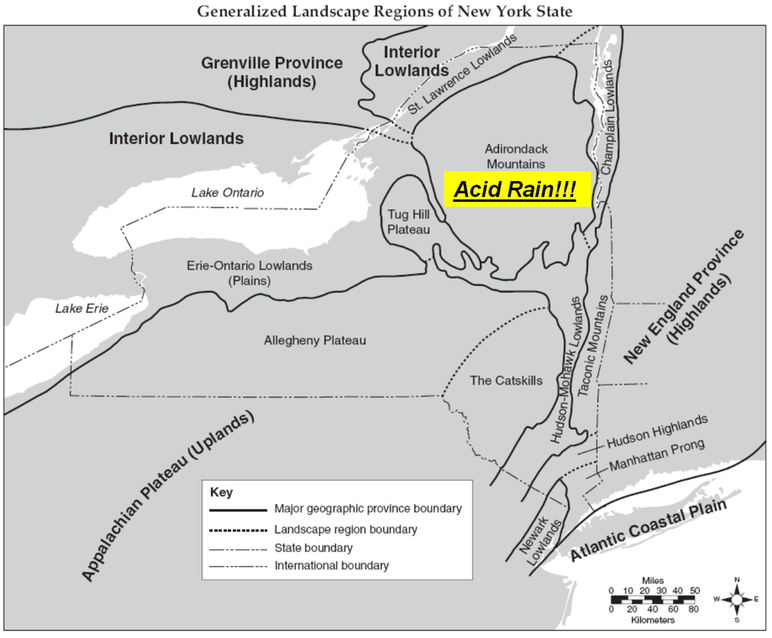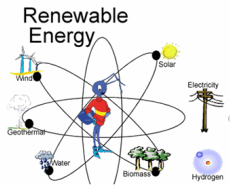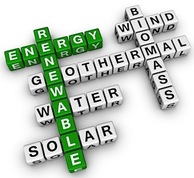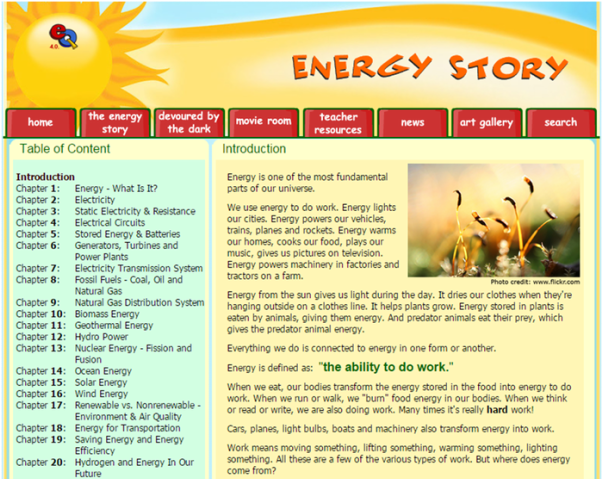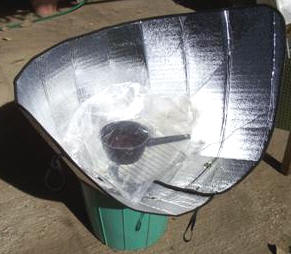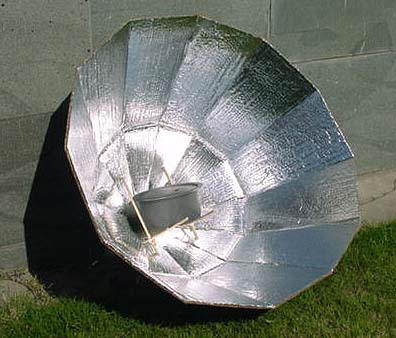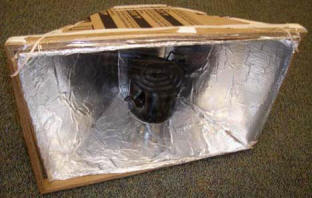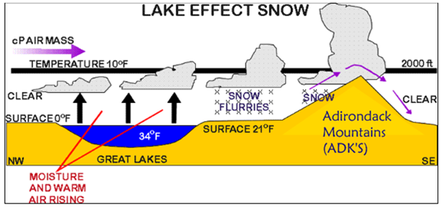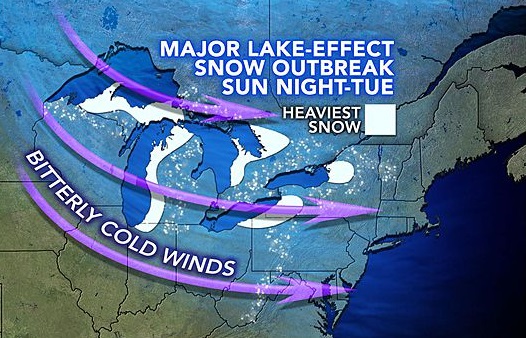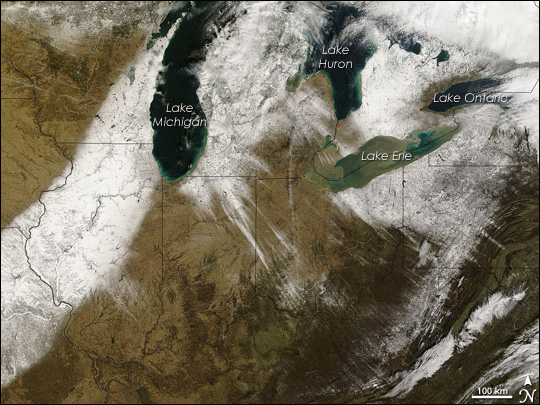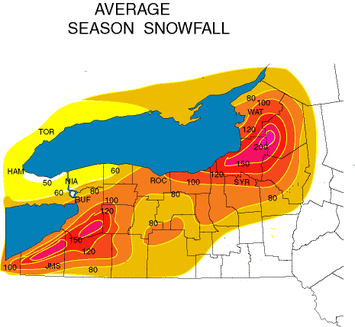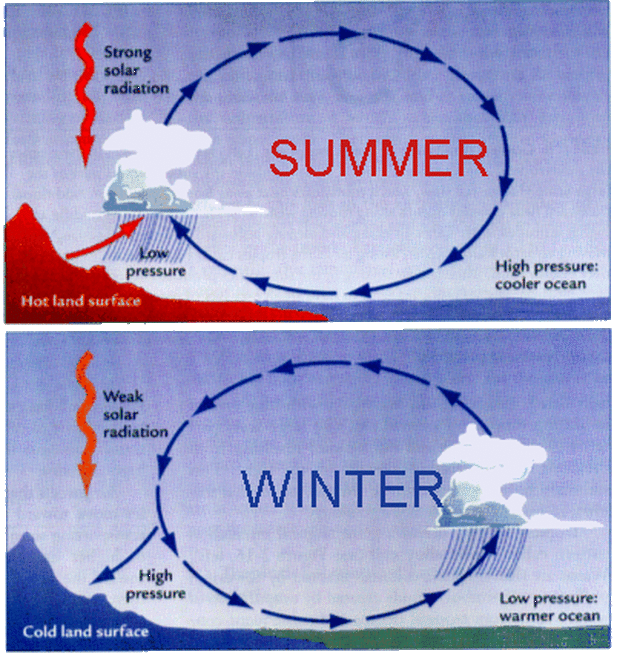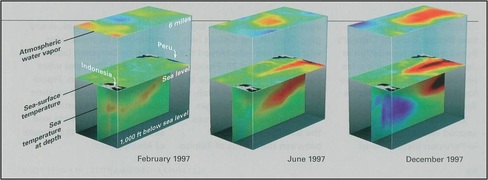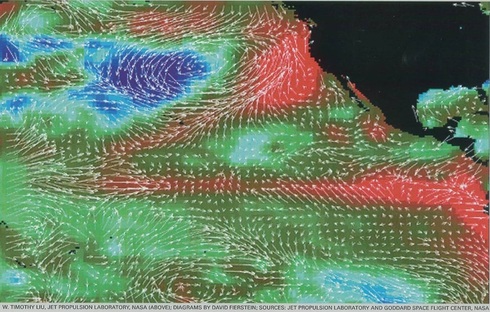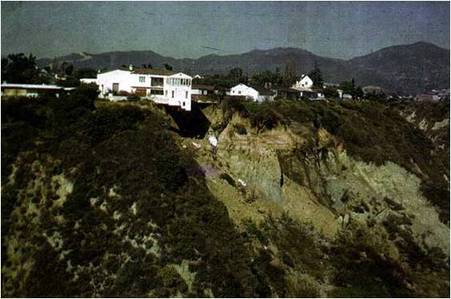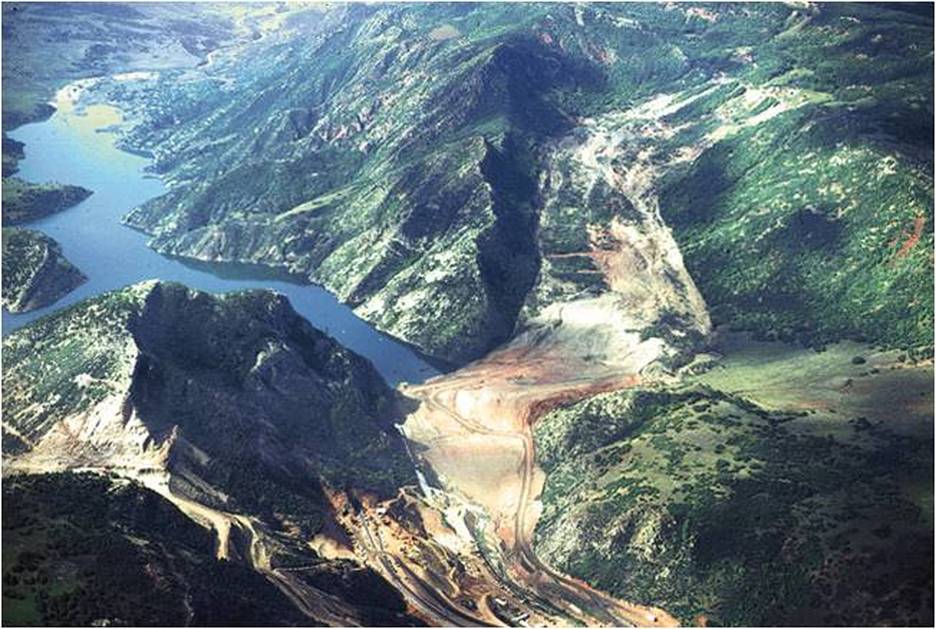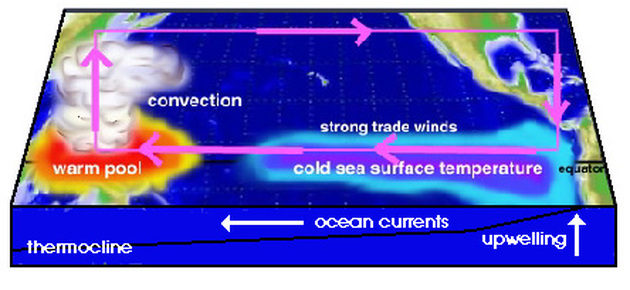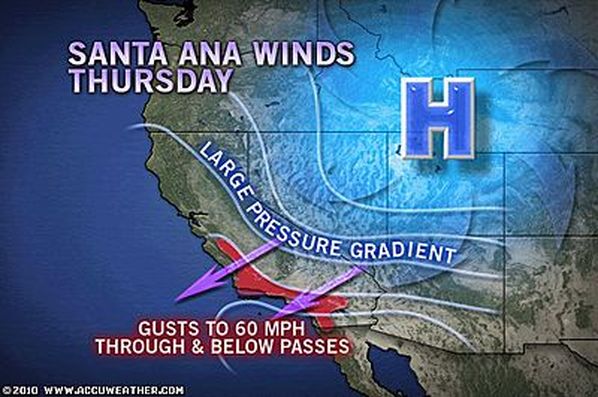Climate
|
Climate is defined as the overall weather patterns of an area over a long period of time.
|
|
|
Climate Types:
Climographs
Climate Factors
The temperature and moisture conditions that a location experiences are the result of many geographic factors that influence air masses.
Latitude and Rainfall
Latitude, Temp/Pecip, Time of Year |
Inter-Tropical Convergence Zone (I.T.C.Z.)The ITCZ can also be referred to as the heat equator. It is generally the hottest location between the tropics on a given date of the year. The high temperatures produce low pressure, which attract airmasses from the north and south to the area. |
|
Sailors commonly refer to the ITCZ as the doldrums. This belt of heavy rainfall migrates around the equatorial region throughout the year as the direct rays of the Sun move between the tropics .
The dry, high pressure regions (horse latitudes) are generally located at 30 degrees north and south, though their location also shifts according to the location of the Sun's direct rays (see diagram to the right). |
Locations in the the northern hemisphere reach their maximum temperatures during the months of June and July, while a southern hemisphere location observes its highest temperatures in December and January.
Moisture Levels also vary with latitude and time of year.
The equator has the most humid climates in the world. Most of the worlds rain forests are located at or near the Equator (see map below). This is because the warm air can hold a lot of water vapor, and it rises, which leads to heavy precipitation (RECCP). This is true on a smaller scale at low pressure located at 60º north and south latitude.
Global Wind PatternsIn the northern hemisphere, as air moves from high pressure to low pressure belts, the Coriolis Effect causes a rightward curve in the paths fluids travel.
The Prevailing Winds that blow between latitudes are controlled by this effect. They play a major role in determining the climate an area receives, as they transport air masses across regions, carrying the temperature and moisture characteristics of the source region across those regions. The direction the prevailing winds blow also controls the normal storm track for locations. This affects aspects of local climates that will be detailed as it relates to local trends at the appropriate time.
|
|
Local Winds
|
Locations close to large bodies of water have wind patterns that are controlled by the unequal heating rates of land and water. As we have discussed in a previous section, this is due to their differences in specific heat.
A sea breeze occurs during the day, and a land breeze occurs during the night time. Explore the file to the right to view the processes in action. |
|
Elevation:
|
The orographic effect takes place at mountain barriers. The prevailing winds blow warm-moist airmasses up mountain sides, causing the "RECCP" process to occur. This occurs frequently on the west coast, at the Sierra Nevada and Cascade mountain ranges (see diagram above).
The side of the mountain that the wind goes up is known as the windward side. This side of the mountain will have a humid climate with lots of precipitation. The leeward side of the mountain can also be called the "rainshadow" area. This is because all of the moisture that was in the airmass on the windward side has been squeezed out, leaving a hot-dry wind to come down the mountain. Native American cultures referred to this hot wind as the Chinook Wind (snow eater). This is a great example of latent heat (the hidden heat of phase change). The energy released into the air as the water vapor condensed is added to the energy of the air mass. What started as warm-moist air reaches the same elevation on the opposite side as hot and dry. |
Due to:
- Expands - Cools to the dew point - Condensation occurs - Precipitation |
Distance from a Large Body of Water
|
|
The difference in specific heat of land and water causes them to warm and cool at different rates.
1. Coastal Climates:
2. Terrestrial (inland) Climates:
|
|
3. Ocean Currents:
The direction that surface ocean currents circulate is controlled by the Coriolis Effect. These currents, along with the ocean conveyor current, play a major roll in distributing heat on Earth. They take warm water from the Equator toward the poles and bring cold water from the poles toward the equator. |
Current Top Score / Holder: 12,550 points (Alex S.)
I will post the image, score, and your first name (or a generic name if you prefer) in the space above until it is surpassed.
Climate Trends:
Global Warming and the Greenhouse Effect
Global Warming Trends: Ice, Sea Level, CO2, and Temperatures
Water Heating Curve Connection |
One of the most fundamental connections to be made between shrinking sea ice and global warming is through the water heating curve. The temperature of a mixture of liquid water and ice remains the same while heat energy is added to a system. The energy is used to melt the ice. Once the ice has all melted, water temperatures rise.
|
Global Warming & Mass Extinctions:
|
|
We hear a lot about potential changes to sea-level affecting human civilizations as the worlds icecaps melt. It is a legitimate concern for the billions of people living close to sea-level, but to gain an understanding of exactly what threats global warming poses to us all, watch (at least) the first 20 minutes of the video to the left.
|
Acid Rain Interactive
|
Acid rain occurs when Sulfur Dioxide & Nitrogen Oxide emissions turn water vapor in the atmosphere acidic. The pollutants act as condensation nuclei, lowering the pH of the water vapor.
The prevailing winds blow factory pollutants from Detroit, Michigan for hundreds of miles until they precipitate into the land, streams, lakes, and vegetation of the region. |
Acid Lake Interactive
Maps
The Adirondack Mountains in New York State have been exposed to heavy amounts of acid rain. The acidification of the area most directly endangers plant and aquatic life who are susceptible to changes in pH level.
"Clean" Coal:
Energy Production: Past, Present, and Future
Solar Cookers Project
Lake Effect Snow
Cold (cP) air moves over warm water, which adds moisture to the air. The moist air then travels over cold land, which cools the air to the dew point, and then... SNOW!!!
Monsoon Seasons
Land heats to extreme temperatures, so in the summer, the warmth produces low pressure and the storms that come with it. During the.winter, the cold produces high pressure (dry) over the land.
|
Note: The ITCZ (heat equator) bends farther into the northern hemisphere during the month of July than it does into the southern hemisphere during January. This is due to land warming faster than water (land has a lower specific heat), and the fact that there is more land in the northern hemisphere. |
El Nino
An El Niño event occurs when warm water builds in the eastern Pacific Ocean, causing low pressure and heavy precipitation in the region. Cold waters accumulate in the western Pacific Ocean at the same time, bringing high pressure and dry conditions.
|
The abnormal pressures can weaken and sometimes reverse the trade winds, causing the ocean to flow with an equatorial counter current. This delivers more warm water to the west coast of South America, further lowering atmospheric pressure in the region.
The low pressure brings heavy precipitation to the Western United States, even some mild Hurricanes. The precipitation leads to many forms of erosion (see the photos to the right for examples). During these times, the East coast of the Unites States experiences warmer than average winters, with heavy snowfalls common in the northeastern region. |



